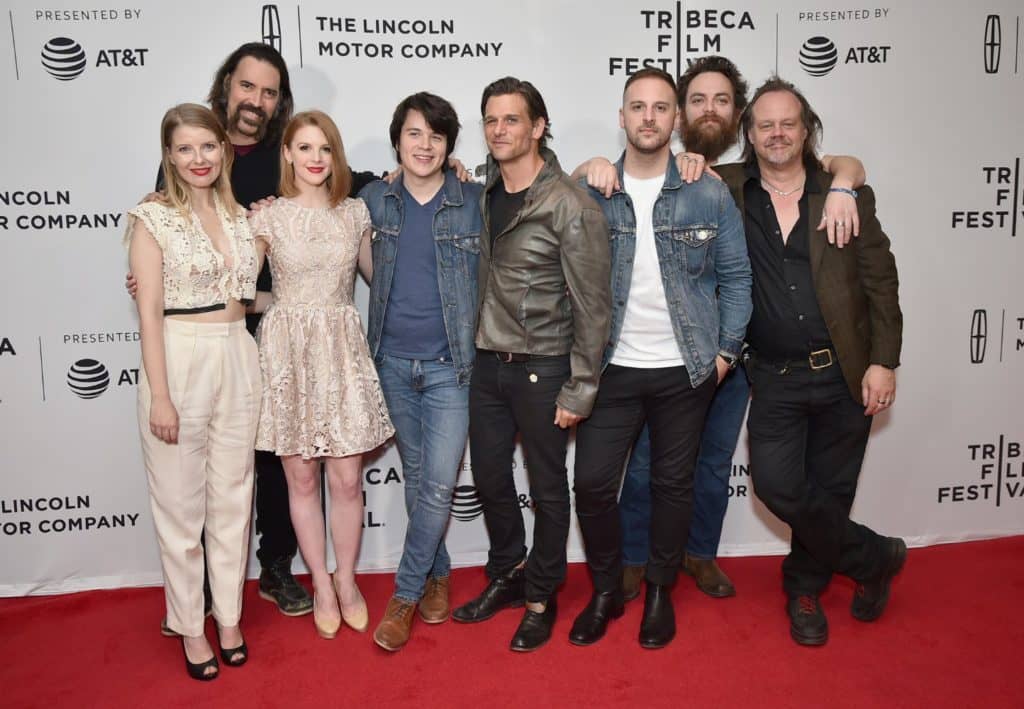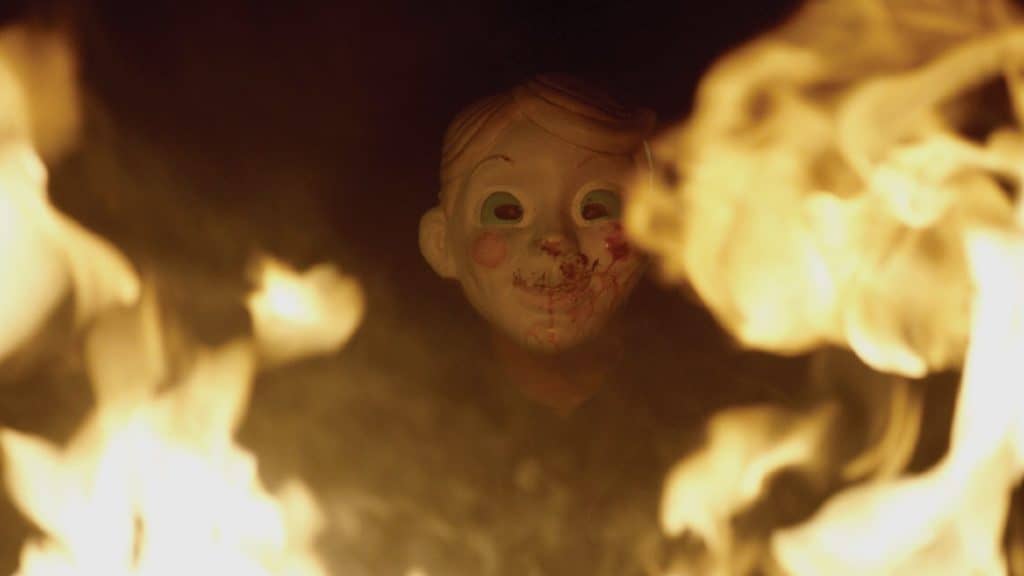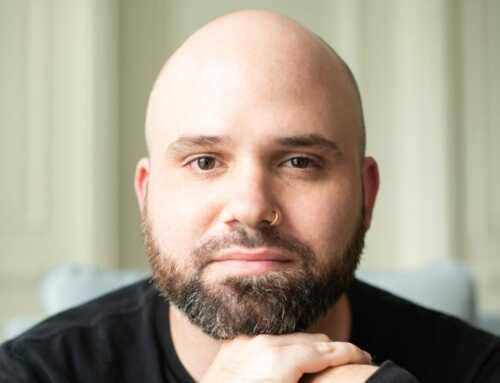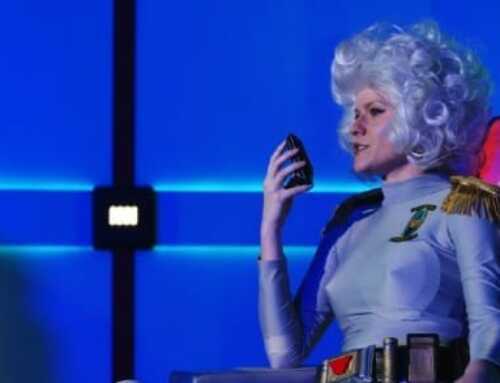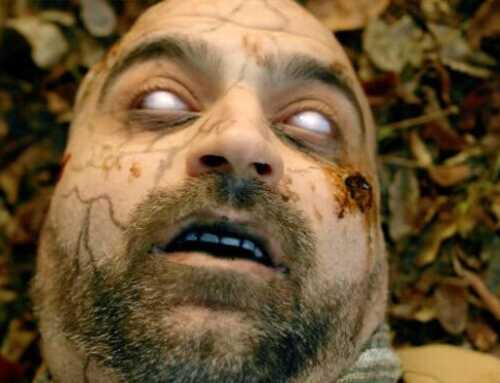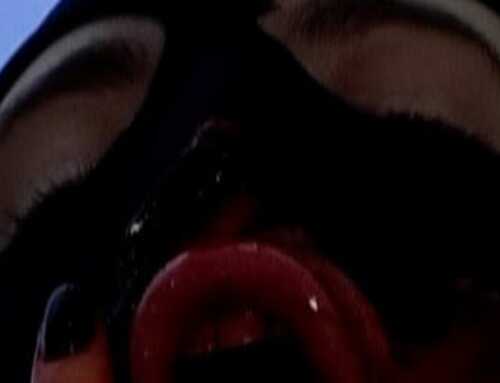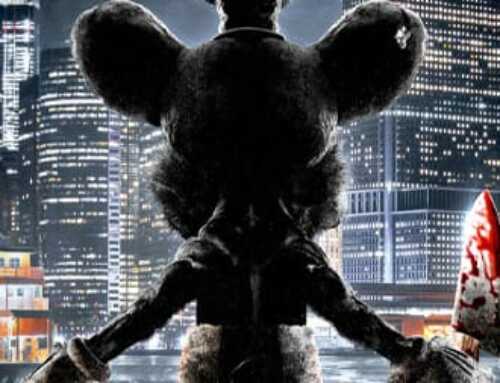Director Mickey Keating (Pod, Darling, Carnage Park, and the forthcoming Psychopaths) has created some of the most varied and intense horror/suspense movies in recent memory, and he was kind enough to take some time out of his busy schedule to chat with HorrorBuzz. Check out my interview with the young gentleman below!
HorrorBuzz: This is the first time I’m using the app, so hopefully it’s recording.
Mickey Keating: Hey, if not we can just do it again. (laughs)
HB: Good to meet you finally, I’ve been a fan of yours for a while.
MK: Ah, yes, it’s great to hop on the phone.
HB: Give me some background on you, where were you born, etcetera?
MK: Well, I’m from Orlando, Florida originally, and what’s there to do there besides sweat and watch movies? But I was really inspired by–they have an incredible Halloween event at Universal Studios ever year.
HB: Oh, yeah.
MK: Halloween Horror Nights, and when I started out and knew I wanted to make horror movies, that was a really great way to look into the inside of movie magic, even though it was haunted houses, and that kind of inspired me, my hope and dream is to one day do a movie that gets turned into a haunted house at Halloween Horror Nights.
HB: Oh, that’s cool.
(crosstalk)
HB: I’ve been to the one out here in Hollywood many times, and I used to work at Knott’s Berry Farm when they did their Halloween Haunt.
MK: Oh, awesome, I love those. The one in Hollywood’s great too.
HB: Let’s talk about Darling.
MK: Totally. What do you want to know?
HB: Well, it was the first movie that I saw of yours, and it totally blew me away.
MK: Aw, man, thank you so much.
HB: You’re very welcome. It was such a suspenseful movie, and moody, almost like you were watching somebody break down in front of you and you have no way to help them.
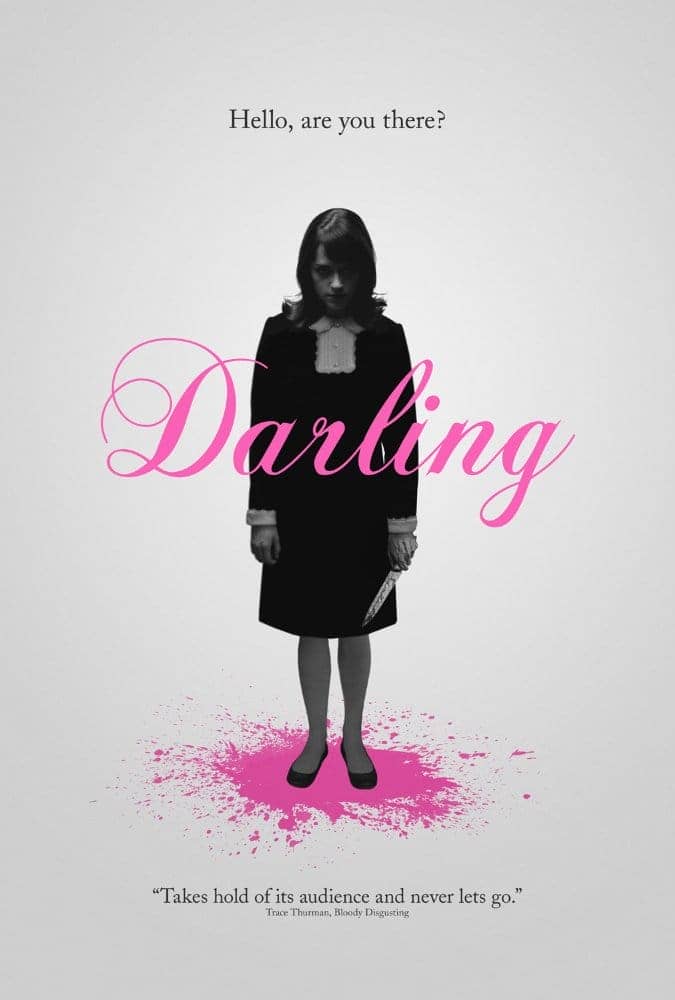
MK: That’s awesome, man. I definitely wanted to make something that–the movie is its own beast, its own entity and to kind of create something that is a little bit different and evokes those strange emotions so I really appreciate you saying that.
HB: You’re very welcome. First of all, Lauren playing Darling was amazing. I had seen her in Jug Face a few years ago and her wide eyes, just kind of wandering around innocently while doing all these horrendous things was just amazing.
MK: Yeah, I was very lucky because she was in my movie Pod and she kind of plays the victim first and foremost, and while I was editing Pod I was thinking about the next film. I was watching a lot of 60s really atmospheric horror movies and experimental movies and I just kind of thought if Lauren wants to do this, that will be the next movie. So fortunately it came together very quickly and it was just really really exciting to make something that, while Pod was very dialogue-driven, to try to strip that back to something that was almost dialogue-less in a lot of moments.
HB: I’m trying to remember, other than her scenes with Sean Young and her scenes with the man she accuses, there’s not much dialogue throughout the whole thing, right?
MK: There are very few little pockets of exposition before the rest of it and I wanted to make it almost like a surreal dream (laughter). From my dreams I just don’t remember those things I say to people, I only remember what has occurred to me in them.
HB: It reminded me a little bit of the movies Roman Polanski made (Repulsion, The Tenant). Was that a conscious influence or a happy accident?
MK: The whole apartment trilogy is something that I really admire, truly. Visually we shot the film in 1:66, that aspect ratio, to kind of pay homage and tribute to Repulsion. But also Diabolique was another big influence and The Innocents was another one, the most gorgeous black and white horror film of maybe ever. In terms of filming imagery we’re definitely paying homage to the nightmare sequences in The Exorcist and of the works of Hollis Frampton. The ringing phone in Darling is actually my loving tribute to Hollis Frampton’s experimental film Surface Tension which was shot in New York City as well. Obviously I love Woody Allen’s Manhattan and that kind of grew the idea of doing sequences that really romanticized the city of New York.
HB: The black-and-white cinematography made it really glow, almost. It reminded me of of the 1940s where everything is a little diffused and the colors are glowing and rich.
MK: Absolutely.
HB: Was that an actual house or was it a set?
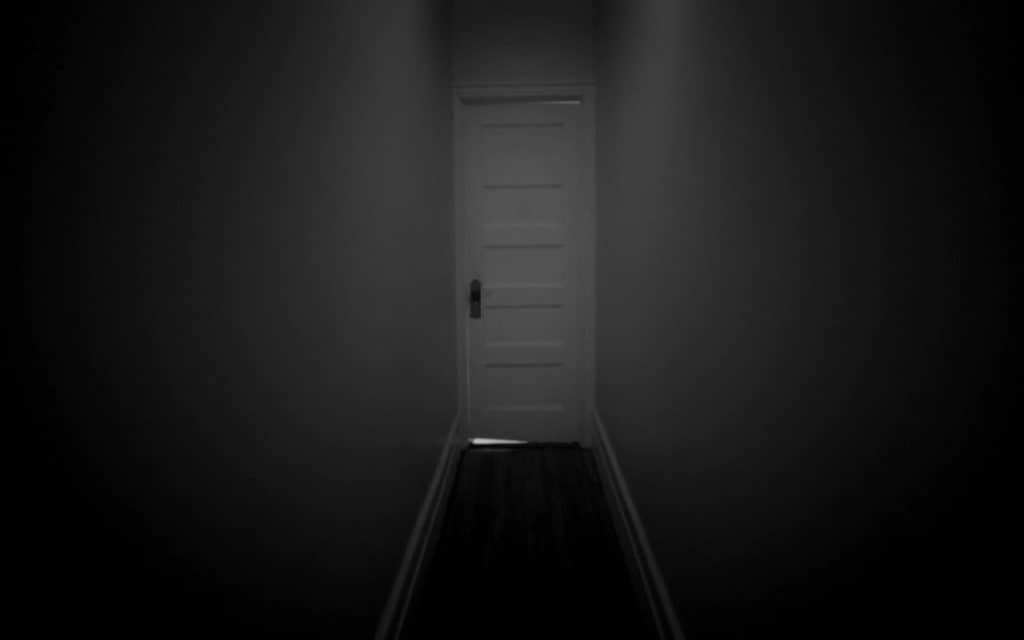
MK: That was an actual house. Originally I wrote the script to be more like Abel Ferrara’s Ms .45, a big kind of lofty apartment like that, in a strange way besides the door hallway. The setting is secondary to Darling–this is a character piece. We were about two months from shooting and Lauren was friends with the owner of this gigantic brownstone on the upper West side and I said great let’s get some pictures and see if we can kind of conform the idea around it. It worked out really really well, but–yeah that is a totally real house and it was under construction the entire time we were shooting.
HB: Oh really?
MK: Yeah it was very much an experience making it look livable.
HB: That house really is its own character. Every time I saw that hallway where she looks at the door at the end, I thought, “No way is that a real house, that’s got to be some kind of 40 foot long set he built.”
MK: Yeah it was fortunately just a 40 foot long hallway.
HB: So that was my introduction to you and then I watched Carnage Park after that.
MK: Oh cool, a left-hand turn almost.
HB: 180° turn, absolutely.
MK: Which is what I definitely wanted to do.
HB: And when I saw it I thought, “This is the same guy who did Darling? That quiet little moody suspense film?” And here he is like 70s Wes Craven combination of The Hills Have Eyes and The Most Dangerous Game.
MK: I think it was really fun to do something that was totally different because first and foremost if I made a movie like Darling again it would take the piss out of both of them. I truly believe with every movie that I make I have all of these things that inspire me, and all of these different kind of things that I want to tackle. I put so much energy into trying to accomplish that, that I never want to do a movie like that again! (laughter) Weirdly we shot Darlene in November and Carnage Park in May and it was really exciting to have that kind of a quick turnaround.
HB: Where was Carnage Park filmed?
MK: We shot it in Acton, California about 40 miles outside of Los Angeles. You go out there it’s just trailer parks and…it’s where I imagine Breaking Bad also takes place.
HB: And I wanted to thank you very much for hiring one of my favorite actors, Graham Skipper, who dies in the beginning.
MK: And he dies in Psychopaths as well. Hopefully I get to kill him many many many more times because he’s such a sweet lovely guy.
HB: I interviewed him a few months ago right about the time Mind’s Eye was coming out. Super nice guy
MK: Yeah he’s lovely and he’s a really good actor which is very fortunate.
HB: The first time I saw him was on stage for Reanimator the Musical.
MK: When he becomes like the next big thing maybe he’ll bring it back in its glory once again.
HB: You did Darling which is all set inside one house, and then you did Carnage Park, where you have this entire outside area to work with–what were the challenges or the differences between the two filming experiences?
MK: Shooting out in the desert, we shot it in May which brings it’s own kind of nightmarish problems like: I got actual burns on my lips from the sun.
HB: Oh geez
MK: At the end of day two our make up head was like, you need to put something medical on your lips because this is bad, and I went, no I’m fine I’ll be OK (laughter). When we are out there in those elements, those are real deal elements. Weirdly, the biggest challenge for me was in the middle of the massive drought. I had a day where we packed all the squib deaths into one day. The fire laws out in that area are atrocious, and deservedly so. You know, one wrong move and it starts going off. So what we did was we packed all the squib hits into one day, but, weirdly, on that day it started raining and there is no covered set. We only have the mine, but throughout the whole production the mine took a long time to build and set design. So we just kind of surrender ourselves to the weather gods and fortunately the sky cleared for a second and I got–every time I needed the squibs to go off it stopped raining so I was very happy.
HB: Sometimes the weather doesn’t cooperate and you do what you can I guess.
MK: It’s weird because there are a lot of elements I thought we’d have to deal with and I never thought it would be rain.
HB: Especially not out in Acton for chrissake (laughter).
MK: No way, that’s the arrogance of filmmakers I think–like, I can set a movie entirely outside in California, what could go wrong?
HB: It’s California, it never rains out here.
MK: Exactly.
HB: Okay, so I saw the clip from psychopaths.
MK: Yes
.
HB: And it excited me, but I could not make heads or tails out of it. I got the guy that’s trapped in the seller and the woman in the odd blond wig and the police guy coming to the door–just an amazing looking clip and I think it works to its advantage, but it doesn’t give us any clues as to what’s going on. What can you tell me about it?
MK: The fun thing about Psychopaths is that truly in the title in and of itself it explains the entire story. Psychopaths is completely about the characters and what I wanted to do was just create this world where a lot of bad things are happening at once and everyone is just on the ride for it. Ideally you never know where the movie is going to turn next but hopefully you’re on board for it. Something like Darling or my previous film Pod, takes a while to simmer but this movie starts off with a bang and does not stop. In that clip there’s three psychopaths and they’re all bad.
HB: I had to watch that clip three times in a row saying, what the hell is going on and why am I so interested in what’s going on? These people are very weird and they’re speaking in odd cadences and I’m like: I can’t wait for this movie!
MK: Well it’s just so funny because Jeremy Gardner from
The Battery, he plays the cop in that clip and he does definitely does not look like a cop (laughter) with that hair and the mustache. That’s the thing first and foremost: this movie, more than any of my other ones, was very very layered in terms of the detail. It keeps building and building from there. I think in terms of that clip we chose that one specifically because it’s just a minor kind of look into the ultimate chaos the movie becomes.
HB: The very first moment I saw him I flashed in my head, oh that guy is no cop, he’s going to do something that’s not cop like.
MK: And it’s just a matter of what, and it spirals into complete violence.
HB: I can’t wait! So I’m looking back at Pod and Darling and Carnage Park and now from what you’ve told me about Psychopaths, other then all four of those being in kind of the horror suspense area, there’s really not much of a sameness. They’re such different movies and yet they’re all so, and I think when I see them I can still see that that’s a Mickey Keating film but I have to say I am really amazed at your range here in the genre.
MK: Well thank you, man, that’s really nice of you to say. All of my favorite film makers that I look to, that’s the kind of thing I want to try to accomplish whether it’s Robert Altman or the Coen brothers or even De Palma to an extent, just that ability to not be backed into a corner. I think the problem is filmmakers can become comfortable and it’s very easy to say, like, oh people responded to Darling, let me make another Darling. I always want to be a filmmaker who you don’t quite know what to always expect.
HB: What about the future? Do you have any ideas about what you want to do next or who you want to work with or what kind of movies you want to do?
MK: The thing about Psychopaths it’s all about the characters and it’s all about the actors. I really just hope to keep working with really talented people and I always want to keep pushing myself and challenging my audiences in that regard.





